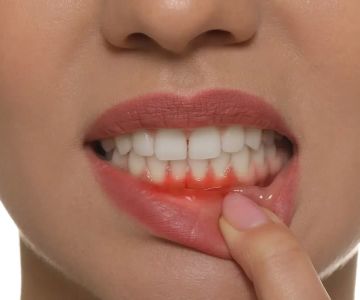Understanding Gum Disease
Gum disease, also known as periodontal disease, is an inflammation and infection of the gums and the bone that supports the teeth. Poor oral hygiene is a common cause, but genetics and certain health conditions can also increase the risk. Symptoms can include bad breath, bleeding gums, gum recession, and loose teeth. The disease progresses through different stages, from gingivitis to more advanced forms like periodontitis.
Stages of Gum Disease
In the early stage of gingivitis, the gums become red, puffy, and may bleed when brushing or flossing. If untreated, it can advance to mild periodontitis, where the bacteria affect the supporting bone and create pockets around the teeth. As the disease progresses to moderate and advanced stages, the bone loss continues, and teeth can become loose and eventually fall out.
Causes and Risk Factors
The buildup of dental plaque is the primary cause of gum disease. Risk factors include smoking, poor oral hygiene, diabetes, autoimmune diseases, hormonal changes, stress, genetics, and heart disease. The bacteria in plaque can pass from person to person, increasing the risk through prolonged contact like kissing.
Diagnosis and Tests
Dentists diagnose gum disease during routine examinations by looking for plaque buildup and asking about symptoms. They may measure the pockets around the teeth using a periodontal probe and take dental X-rays to assess bone loss.
Management and Treatment Options
Gum disease is not curable but can be managed. Early-stage gingivitis can often be reversed with proper dental cleaning and improved oral hygiene. More advanced cases may require scaling and root planing, pocket reduction surgery, bone grafting, gum grafting, guided tissue regeneration, or laser treatments like LANAP. Platelet-rich fibrin and plasma can also aid in healing.
Prevention
Most cases of gum disease can be prevented with consistent and proper oral hygiene, including brushing and flossing daily, using an antibacterial mouthwash, avoiding smoking, and having regular dental cleanings and exams.
Outlook and Prognosis
Gum disease is not life-threatening but can lead to other health conditions if the infection spreads. Early detection and treatment are crucial for managing oral health and reducing the risk of tooth loss.
Complications and Associated Health Issues
Untreated gum disease can cause a variety of complications. It is linked to heart disease, as it can trigger chronic inflammation that affects the cardiovascular system. It also has implications for blood pressure regulation in hypertensive patients. Additionally, gum disease is associated with diabetes, rheumatoid arthritis, Alzheimer's disease, and respiratory conditions like pneumonia, COPD, and asthma. In the context of the COVID-19 pandemic, gum disease patients may have a higher risk of severe infection.
Conclusion
Gum disease is a serious oral health concern that can have far-reaching effects on overall health if left untreated. Understanding the symptoms, causes, stages, and available treatments is essential for maintaining good oral hygiene and preventing tooth loss. Regular visits to the dentist and diligent at-home care are key to keeping gum disease at bay and ensuring a healthy smile and body.







 Kremers, Forbes and Associates DDS5.0 (689 review)
Kremers, Forbes and Associates DDS5.0 (689 review) Dental Care of Sumner: Scott Crane, DDS5.0 (5 review)
Dental Care of Sumner: Scott Crane, DDS5.0 (5 review) Isthmus Dental, Ltd4.0 (215 review)
Isthmus Dental, Ltd4.0 (215 review) SOUTHWEST SMILES LAS CRUCES5.0 (1 review)
SOUTHWEST SMILES LAS CRUCES5.0 (1 review) Ocean Pediatric Dental Associates4.0 (411 review)
Ocean Pediatric Dental Associates4.0 (411 review) Gentle Dental4.0 (210 review)
Gentle Dental4.0 (210 review) The Importance of Oral Health Education During Pregnancy for a Healthy Pregnancy
The Importance of Oral Health Education During Pregnancy for a Healthy Pregnancy Best Tips for Brushing Your Teeth Properly for Healthy Gums: Essential Techniques for Oral Health
Best Tips for Brushing Your Teeth Properly for Healthy Gums: Essential Techniques for Oral Health Why Skipping Dental Checkups Can Lead to Bigger Oral Health Problems
Why Skipping Dental Checkups Can Lead to Bigger Oral Health Problems Advantages of Porcelain Dental Restorations
Advantages of Porcelain Dental Restorations How Can Diabetes Cause Tooth and Gum Problems? Preventing and Managing Oral Health Issues
How Can Diabetes Cause Tooth and Gum Problems? Preventing and Managing Oral Health Issues Healthy Habits for Promoting Good Oral Health and Hygiene: Tips for a Healthy Smile
Healthy Habits for Promoting Good Oral Health and Hygiene: Tips for a Healthy Smile